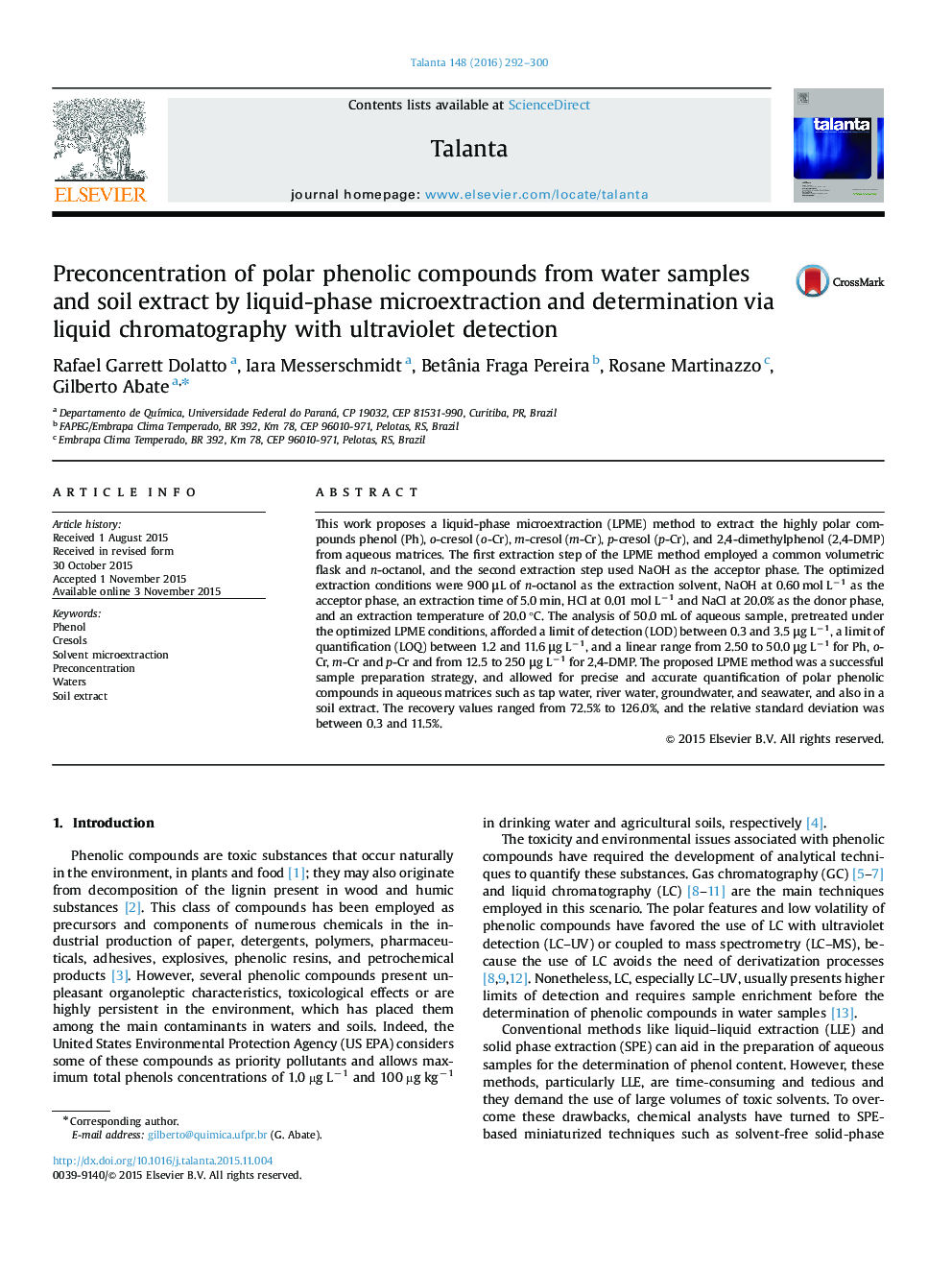| Article ID | Journal | Published Year | Pages | File Type |
|---|---|---|---|---|
| 1243787 | Talanta | 2016 | 9 Pages |
•A LPME technique was proposed for the extraction of the polar phenol and cresols.•A two-stage method was performed, based on solvent and alkaline microextraction.•Adequate performance was verified, in spite of the low log KOW values (1.46–2.40).•A quick extraction, without clean up was reached with attractive figures of merit.•The validation results were appropriate for different water samples and soil extract.
This work proposes a liquid-phase microextraction (LPME) method to extract the highly polar compounds phenol (Ph), o-cresol (o-Cr), m-cresol (m-Cr), p-cresol (p-Cr), and 2,4-dimethylphenol (2,4-DMP) from aqueous matrices. The first extraction step of the LPME method employed a common volumetric flask and n-octanol, and the second extraction step used NaOH as the acceptor phase. The optimized extraction conditions were 900 μL of n-octanol as the extraction solvent, NaOH at 0.60 mol L−1 as the acceptor phase, an extraction time of 5.0 min, HCl at 0.01 mol L−1 and NaCl at 20.0% as the donor phase, and an extraction temperature of 20.0 °C. The analysis of 50.0 mL of aqueous sample, pretreated under the optimized LPME conditions, afforded a limit of detection (LOD) between 0.3 and 3.5 μg L−1, a limit of quantification (LOQ) between 1.2 and 11.6 μg L−1, and a linear range from 2.50 to 50.0 μg L−1 for Ph, o-Cr, m-Cr and p-Cr and from 12.5 to 250 μg L−1 for 2,4-DMP. The proposed LPME method was a successful sample preparation strategy, and allowed for precise and accurate quantification of polar phenolic compounds in aqueous matrices such as tap water, river water, groundwater, and seawater, and also in a soil extract. The recovery values ranged from 72.5% to 126.0%, and the relative standard deviation was between 0.3 and 11.5%.
Graphical abstractFigure optionsDownload full-size imageDownload as PowerPoint slide
